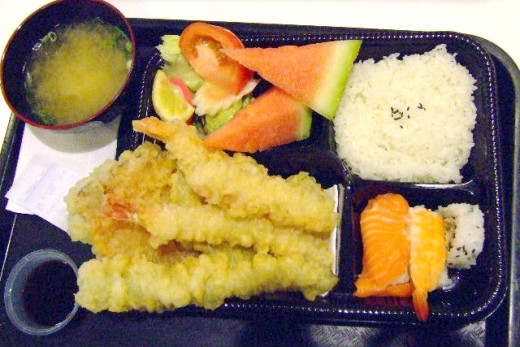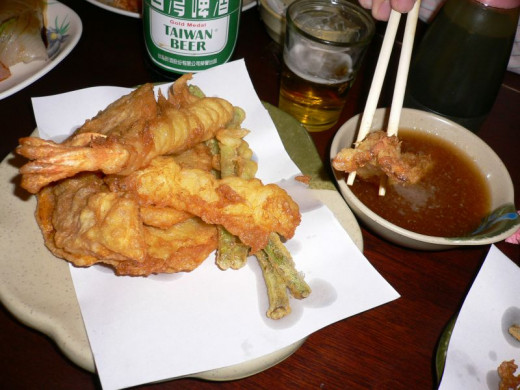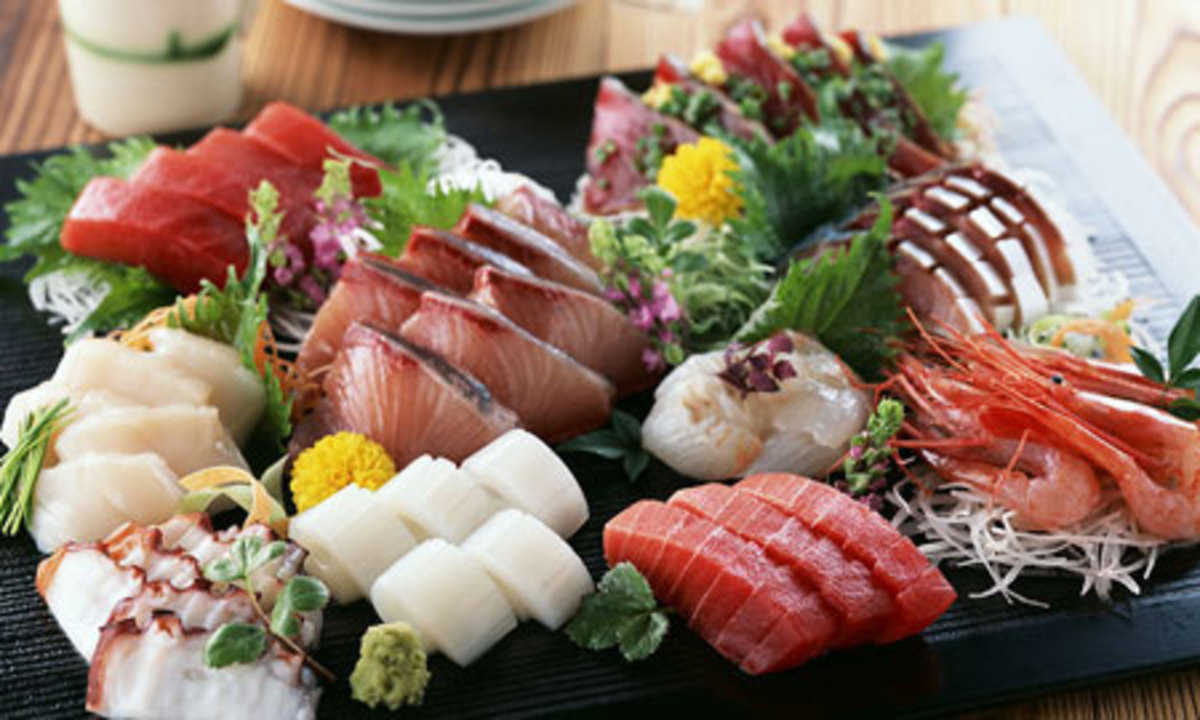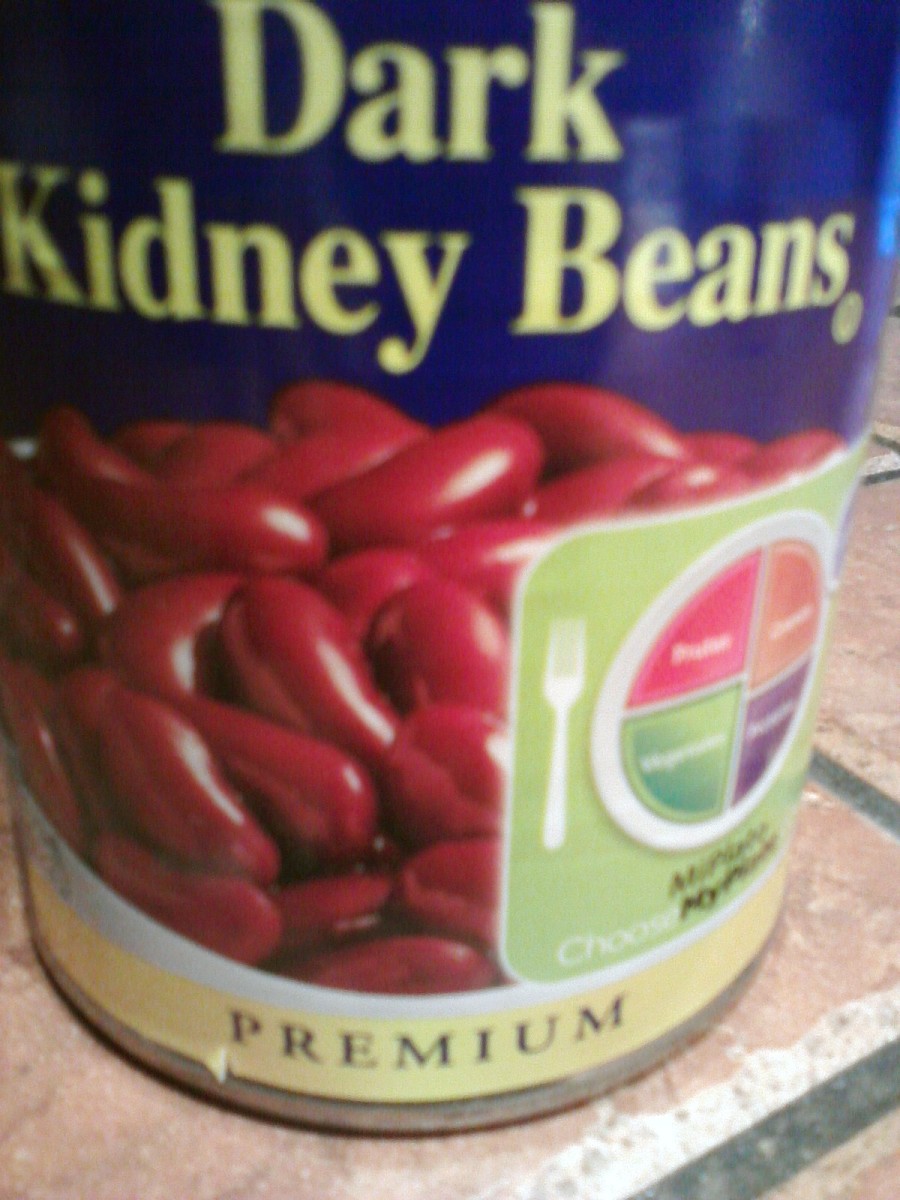What is Tempura?
Origins of Tempura
Japan is well known for its tempura. Tempura is a form of deep frying fish and vegetables in a batter coating. The surprising news is that Tempura did not originate it Japan. It was introduced in the 16th century, to Europe by Portuguese missionairies. The word tempura comes from the latin "ad tempora cuaresmae", which means “in the time of Lent”, when fish and vegetables would be eaten only because meat was not to be eaten during lent. The Japanese did not understand the meaning of this, as much as they thought the word tempora, was key to the food. It used to be a between meal snack. When it was introduced to Japan, master chefs there elevated the taste and texture of this food.
The earliest recorded information about tempura comes from the latter part of the 1500’s. Frying with fat was rare in Japan, until the Portuguese inspired this form of cooking. Tempura is a well known dish associated with Japanese cooking. It developed into its current form of cooking from the city of Edo. In th 1770’s tempura became popular as a snack food. It was sold on the streets of Japan while patrons ate it standing up and did not use chopsticks. The small pieces of prawns, fish, and vegetables were put on a bamboo skewer. The morsels of food were coated with batter and deep fried. It was eaten on the spot as an inexpensive food for the common people. Much like fast food today.
Tempura

Making Your Own Tempura
In the beginning of the 1800’s, tempura restaurants first started to make their appearance. By the middle of the century, tempura started to be appreciated by the upper class of Japan.
Tempura differs from the way the west fries food. To make a good tempura batter, use ice cold water, flour, and egg yolks. Cold water keeps the flour from being sticky. Dip the vegetables and fish in flour and then in the batter of egg, water, flour, in that order. Then deep fry for 2 to 3 minutes in small batches. The temperature of the oil should be 340 degrees for vegetables and 360 for fish. Some restaurants use sesame oil for cooking, but olive oil is an adequate subtitute.
Ingredients:
- assorted vegetables, ( like broccoli, cauliflowers, onions, carrots, shitake mushrooms, eggplant, sweet potato) firmer vegetables do better than softer vegetables. Softer soak up too much oil.
- shrimp and prawns’
- 1 cup ice cold water’
- 1 large egg
- ¾ cup flow
- ⅛ tsp baking soda
- 3/4 cup flour
- 1/8 tsp baking soda
- cooking oil
Directions for Cooking
- In a medium bowl, mix the water and the egg.
- In a second bowl,mix the flour and baking soda.
- Mix the flour and baking soda with the egg.
- Put the batter in the refrigerator while preparing the other ingredients.
- clean and cut the vegetables into any size you desire
- Important - do not overmix the batter. It is the cold mixture and hot batter that make the tempura fluffly.
-
Heat the oil in a frying pan. The oil should be hot enough that when you drip batter in it, the drops come to the top immediately.
-
Coat your ingredients in the batter. Place the coated ingredients in the hot oil, turning when the bottom side is browned
-
Place the fried ingredients on a paper towel to drain. Remove any skewers. Serve immediately.
-
Making tempura is a delicate process, but eating is easy.
Cooking Tempura in the Right Temperature Oil
Ordering Tempura in a Restaurant
Tempura can usually be ordered by the piece, or by the meal, or teishoku. The teishoku includes several varieties of tempura, plus rice, pickles, and soup. Various sizes of teishoku are available, differing in the number of tempura pieces. The most popular seafood items include prawns, shrimp, squid, scallops, and other kinds of fish. Many varieties of vegetable are listed in the recipe list above.
How to Eat Tempura

Eating Tempura
The first rule of eating tempura is to get it while it's hot.
Often Tempura is eaten with dipping sauce. Dip the tempura quickly and try not to soak it in the sauce. Some people use only salt or lemon to season. The choice of how you dip your tempura is up to you.
The main thing, is to eat, enjoy and savor!
more articles by toknowinfo
- Savology: Money Saving Ways to Have a Fabulous Super...
Super Bowl Sunday is a big day in U.S. culture. Over $50 million is spent on food, beer and snacks for Super Bowl festivities. So if you are going to have a Super Bowl party, you might want some money saving... - Famous Football Fables-Fairy Tales and Super Bowl F...
Once upon a time there was a kingdom of millionaire men who roamed a grassy field in tight fitting uniforms to capture an oval brown pigskin to the cheers of the common people. The coveted reward of a shiny trophy and jeweled rings to be placed on... - About Peaches
There may be over 4,000 varieties of peaches throughout the world in round, and even flat shaped fruit. According to the Wall Street Journal, the “best peach on earth” is in a little town 90 minutes from Shanghai, China. Apparently, they are so... - Foodisms: Smart Info About a Smart Food - Avocados
The use of avocados can be found in evidence dating back to approximately 10,000 years ago. The Aztecs called this food ahuacati which means testicle because of its shape, and the belief that it offered sexual prowess, Avocados were thought to be... - Lemons-The Earth Friendly Cleaning Products
- M&M’s: Chocolate Candy That Changed the World
The History, Mystery, and Myths of the Chocolate Candy called M&M’s It was March 3, 1941, Pearl Harbor hadn’t happened yet, but M&M’s were just patented, and the world would never be the same. Franklin Mars, also known as Frank Mars,...






